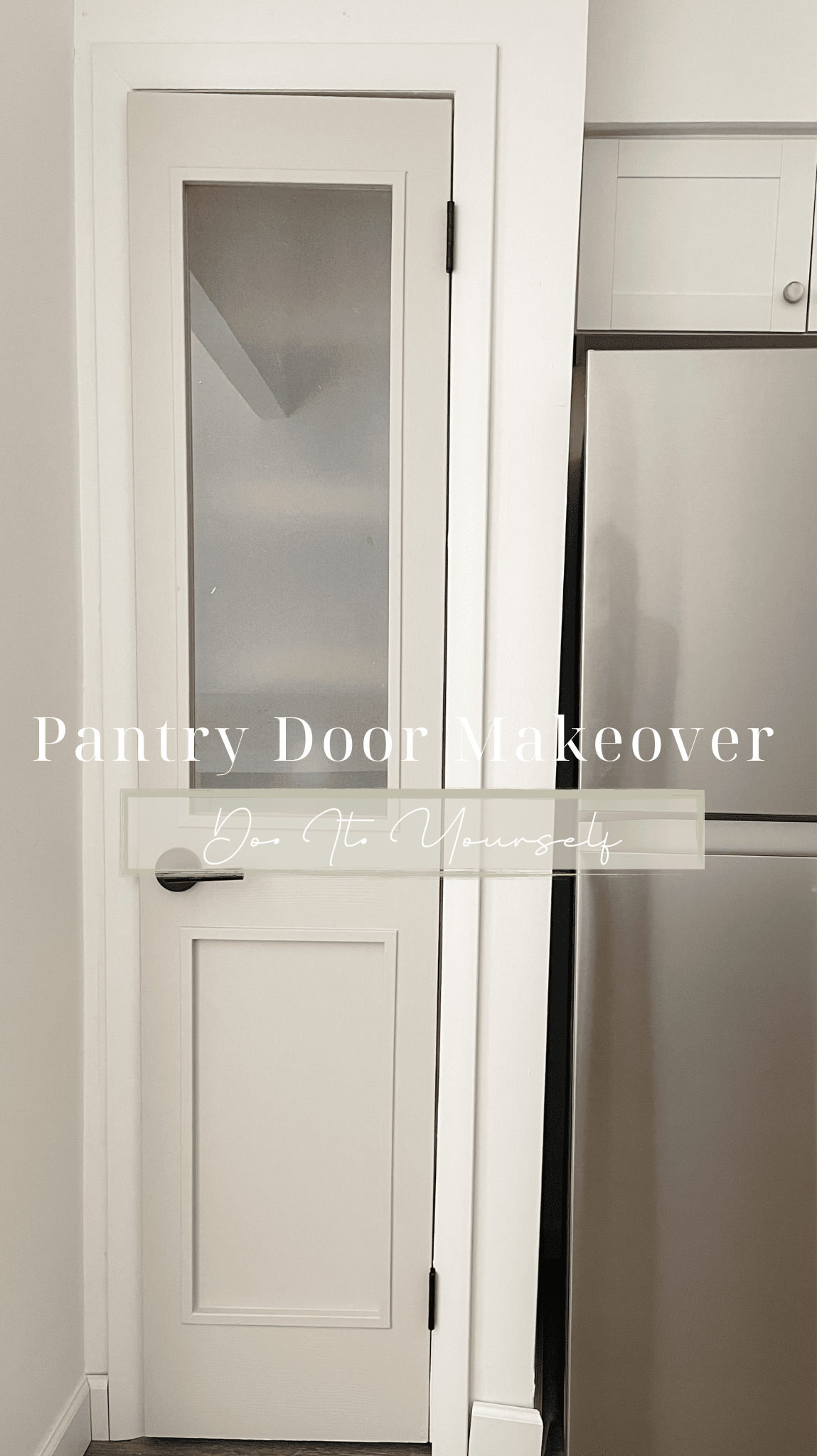
While redoing our pantry I got the brilliant idea to give our pantry door a makeover as well. I would have loved to replace the door completely, but like many other things pantry doors cost a pretty penny. So I took it upon myself to work with what I had.
In this post I’ll share how I took our standard pantry door and transformed it into a custom piece for only a fraction of the cost of a new door!
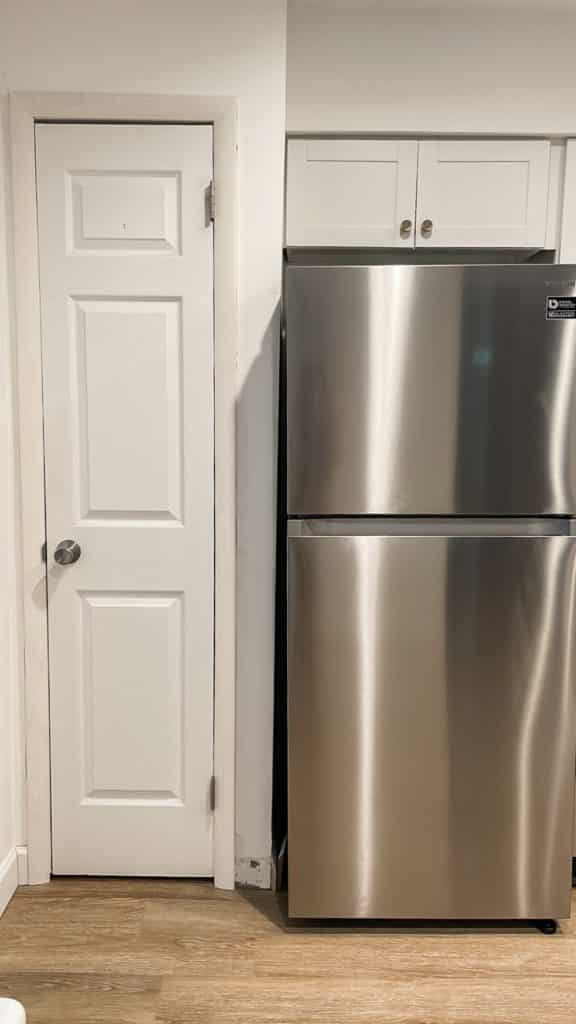
SUPPLIES/TOOLS NEEDED:
- Glass sheet
- Plywood sheet
- 1x2x6ft common board
- Outside corner molding trim
- Wood glue
- Wood filler
- 220 grit sanding block
- 1-inch brad nails
- Multi-tool
- Braid nailer
- Miter saw
SHOP TOOLS/SUPPLIEs HERE:

*IMPORTANT NOTE: The supplies listed above are suitable for a door of 80inx18in size. The amount of materials may need to be adjusted depending on the size of your door.
Step 1: Remove Door
Begin by removing the door and hardware. You’ll find it easier to work with your door on a flat surface.
Step 2: Cut out door panels
Check to see if your door is hollow. If it is, a multi-tool can be used to trim it out. If it is not, a circular saw will probably work best.
Take a scrap piece of wood or MDF board and line it up to where your cuts will be made. Clamp it down to prevent it from moving. This will act as your guide to ensure that your cuts are straight.
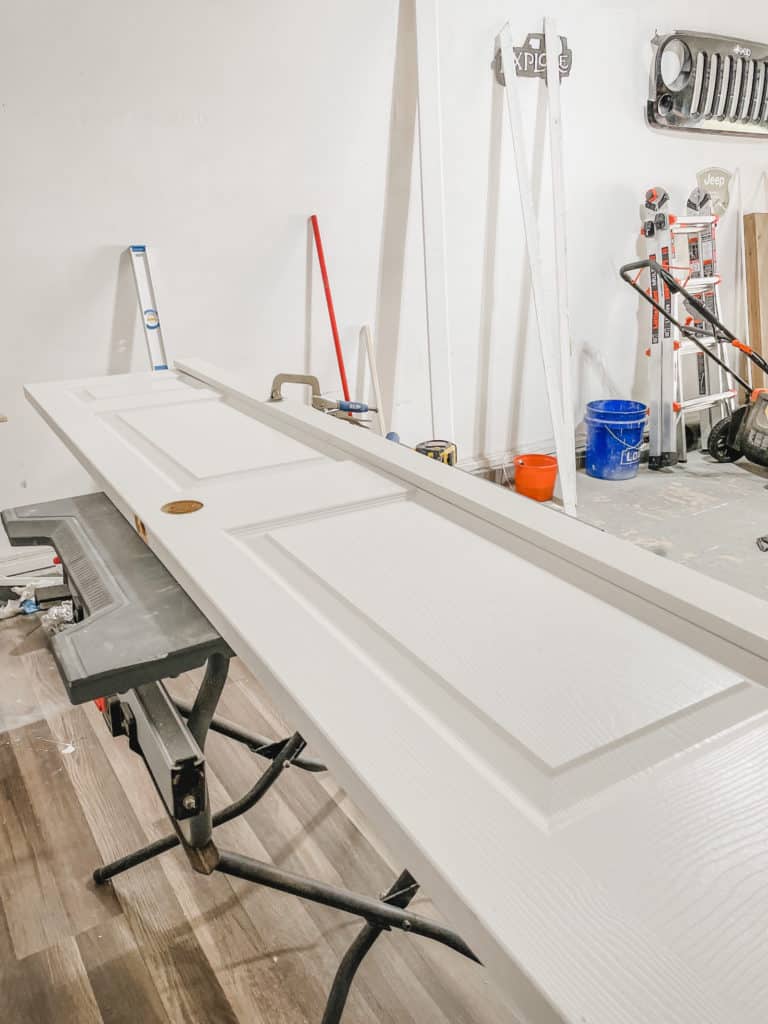
Follow the outline of your panels and cut through the entire perimeter. I decided to cut both the upper and lower panels so the trim would match both of them.
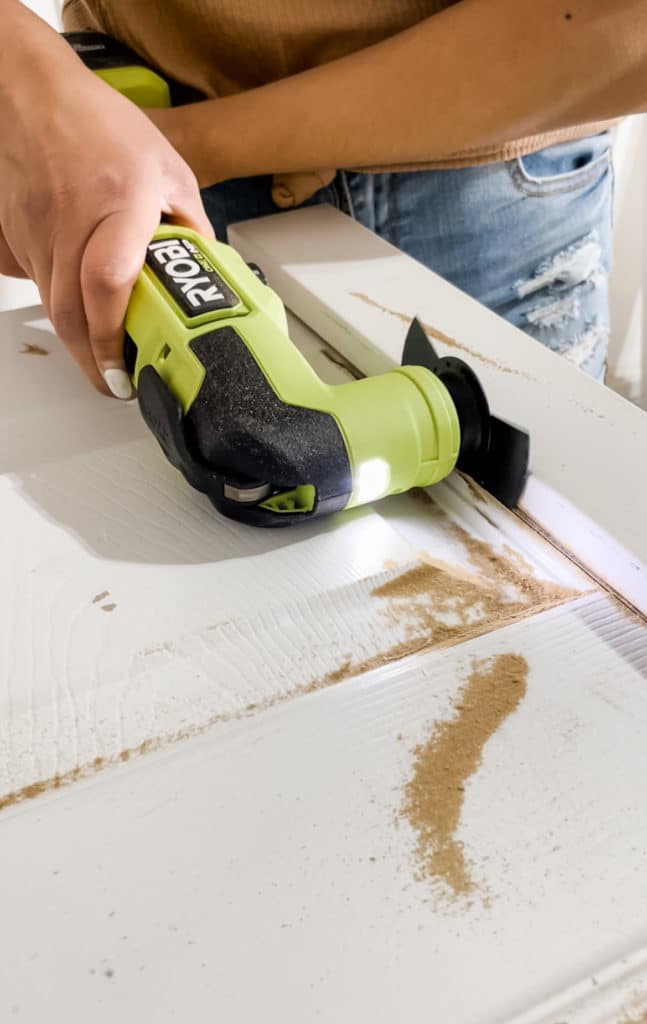

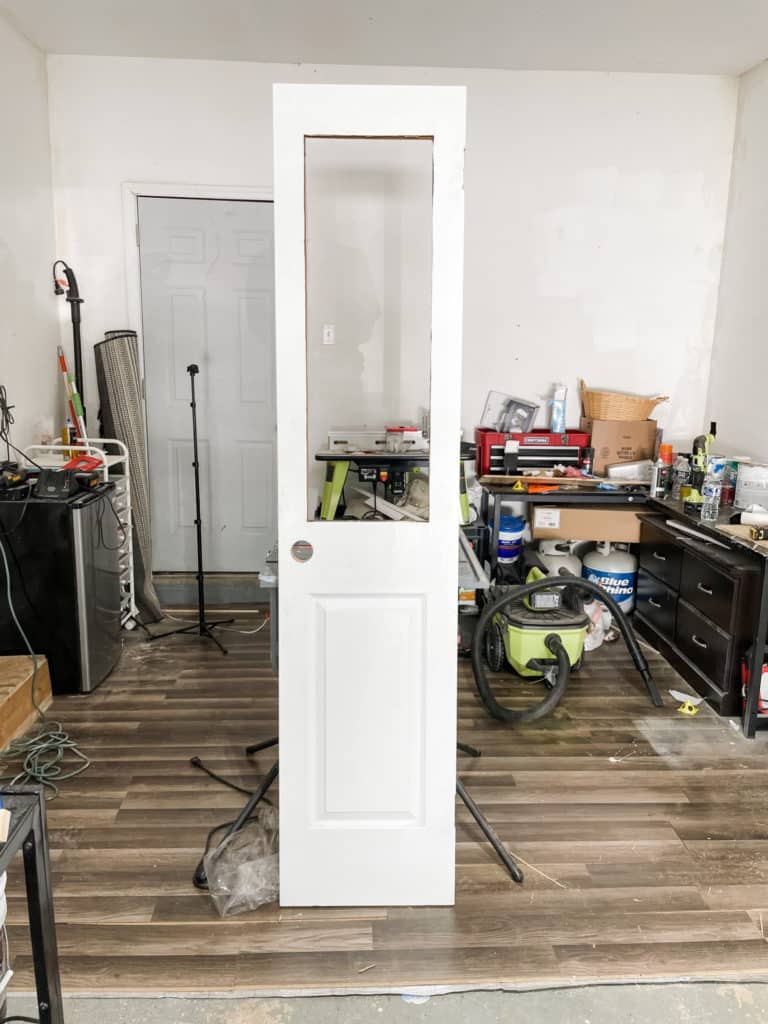
Step 3: Fill hollow opening
If your door is hollow you’ll need to fill the perimeter of the door in order to help your glass stay in place. To do this cut some 1×2’s to size and place them within the hollow parts of your door. Secure them using a brad nailer.
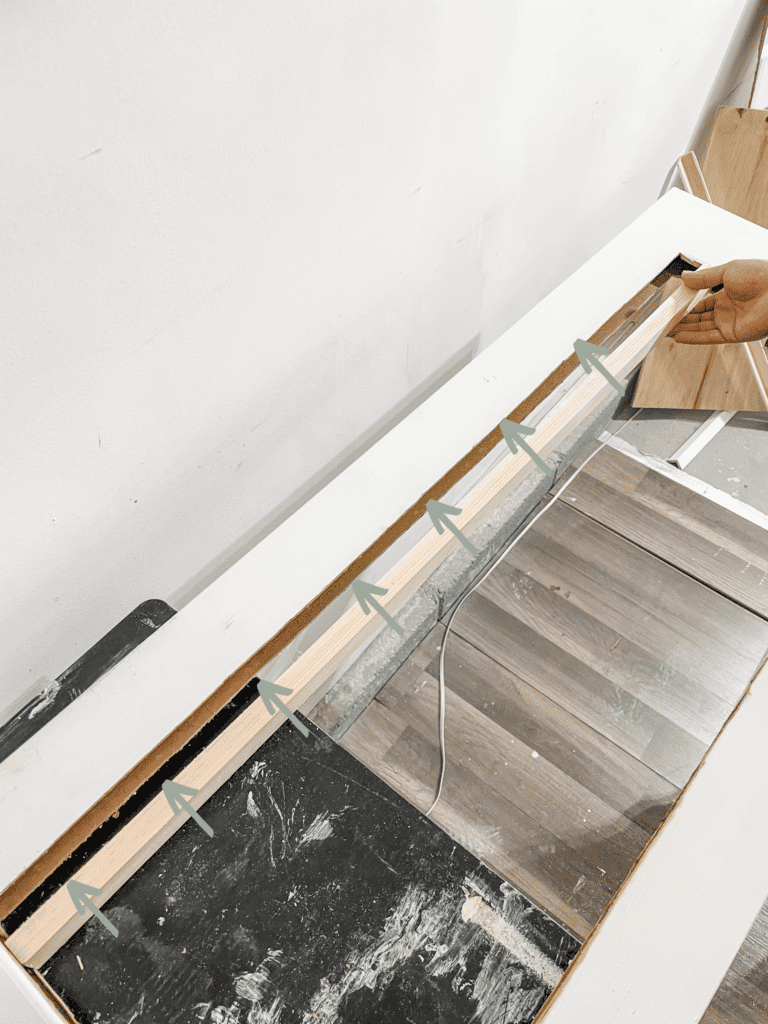
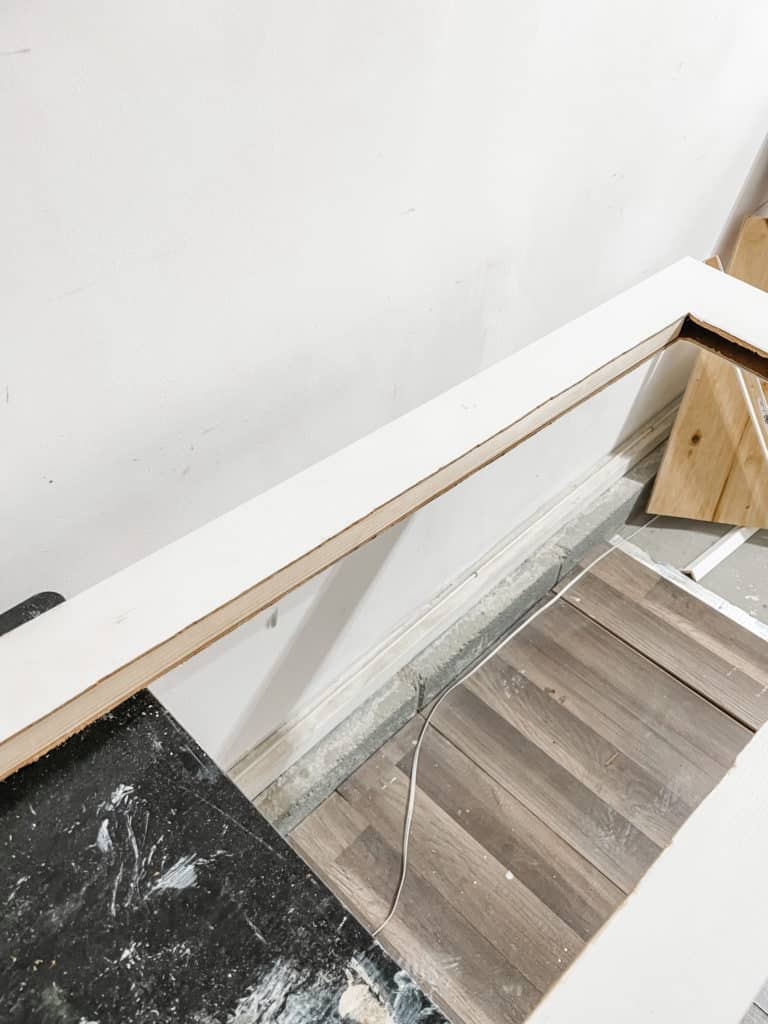
*IMPORTANT NOTE: You may have to trim the width of the 1×2’s in order for them to fit
Step 4: Trim out the door
To trim out the cutouts I used outside corner molding. In order for each molding piece to be flush to one another you’ll need to cut the ends at a 45 degree miter angle.
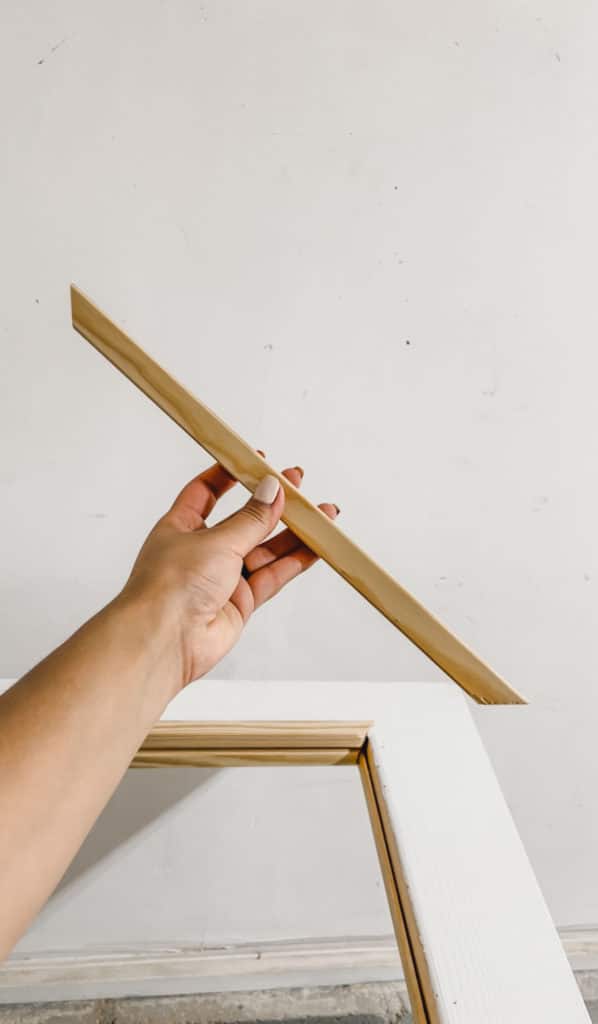
Attach them onto the door using wood glue and use a brad nailer to secure them.
For now only trim out the front of the door.
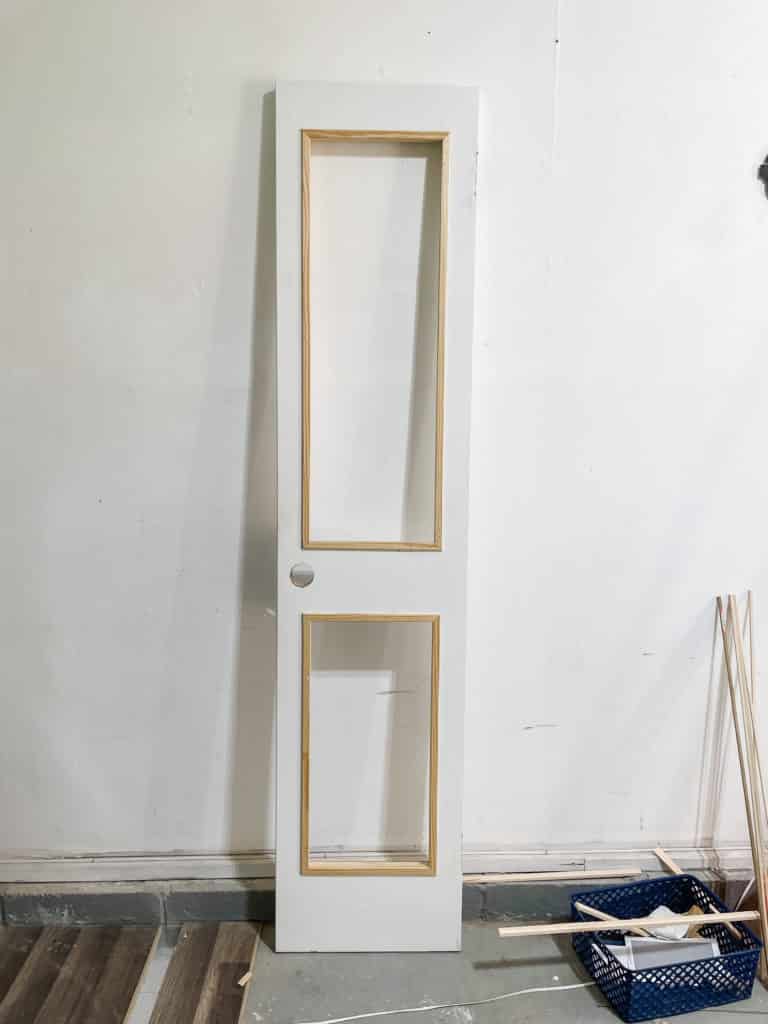
Step 5: Bottom door panel
For the bottom panel, use a 1/4 inch sheet of plywood. Cut it to size so that it fits within the opening and sits against the corner moulding.
Once you have inserted the sheet of plywood go ahead and trim out the back side of the door opening with corner molding. The plywood should fit snug in between the top and bottom corner molding pieces.
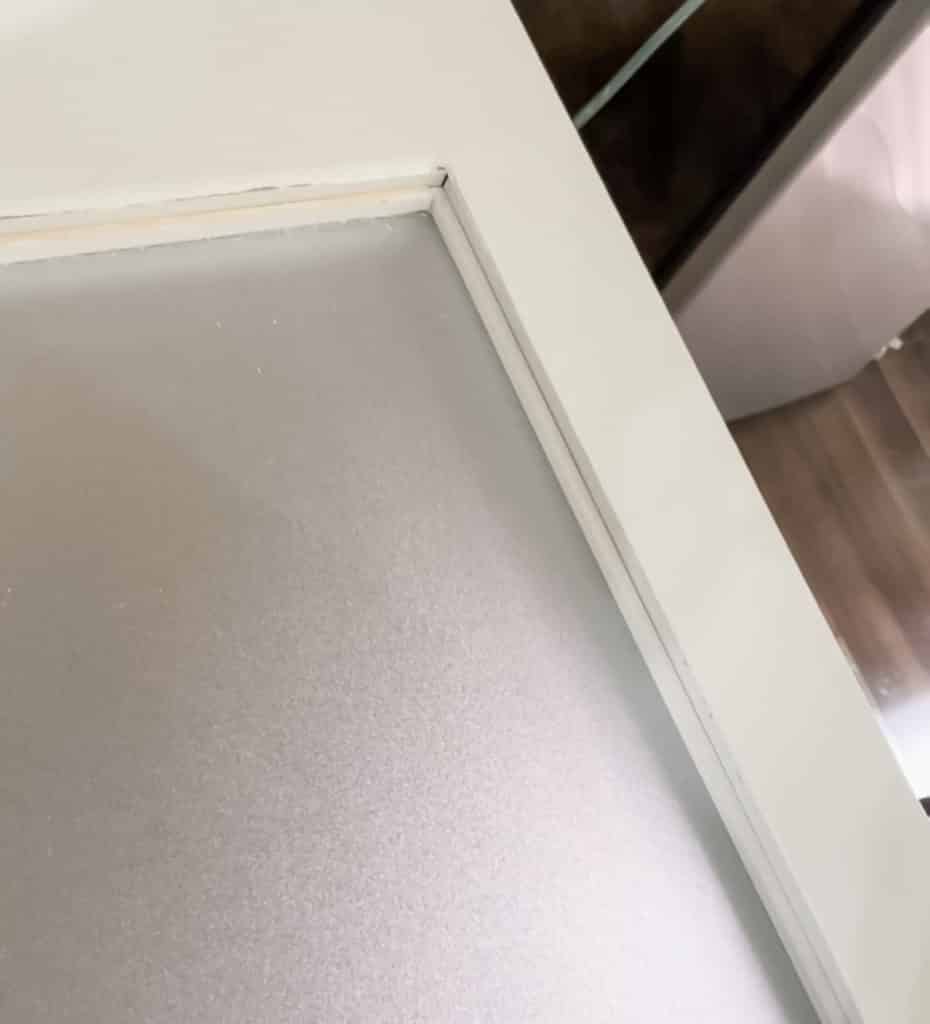
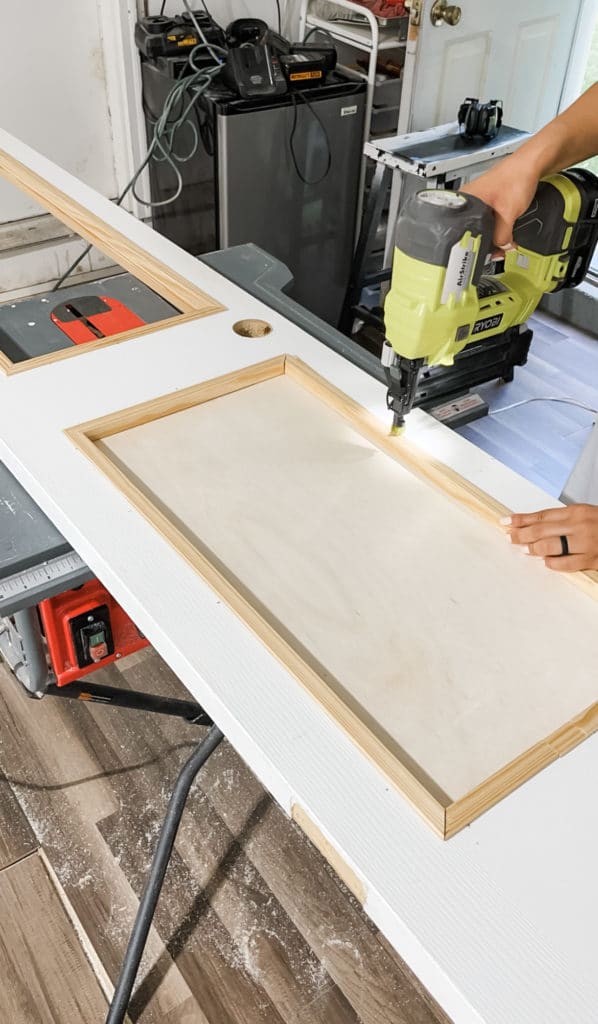
Step 6: Wood filler & caulk
Use wood filler to fill in any nail holes from the brad nailer. Follow by sanding down any excess once it has dried.
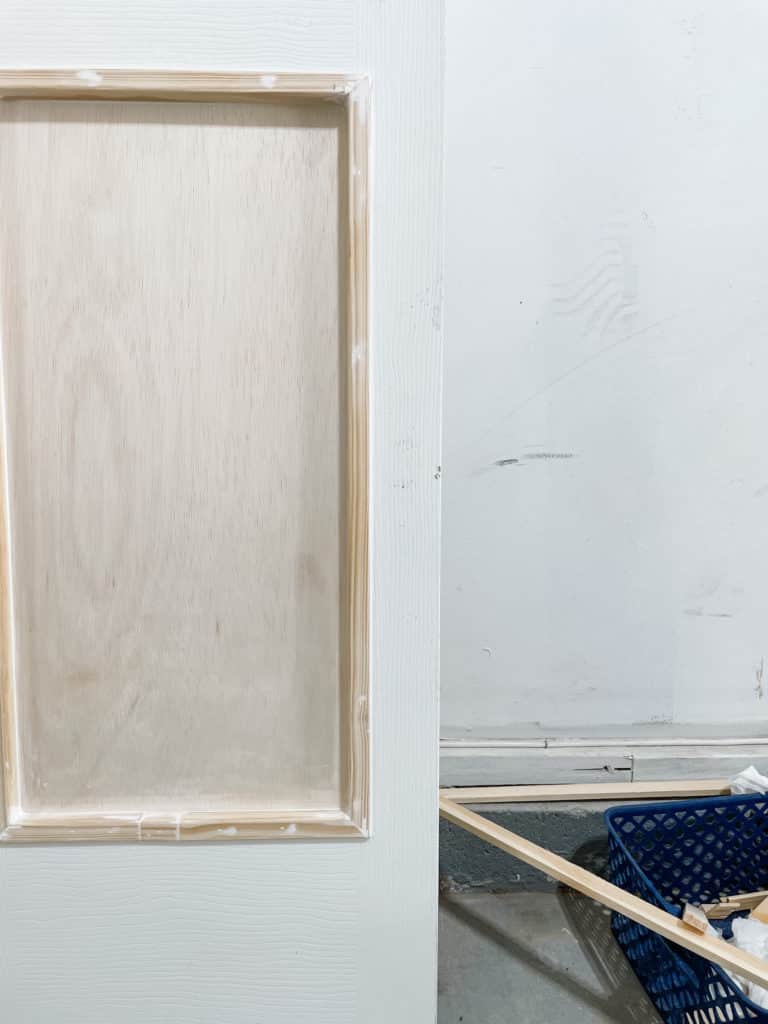
Caulk can be used to fill in the small gaps where the corner molding meets the door.
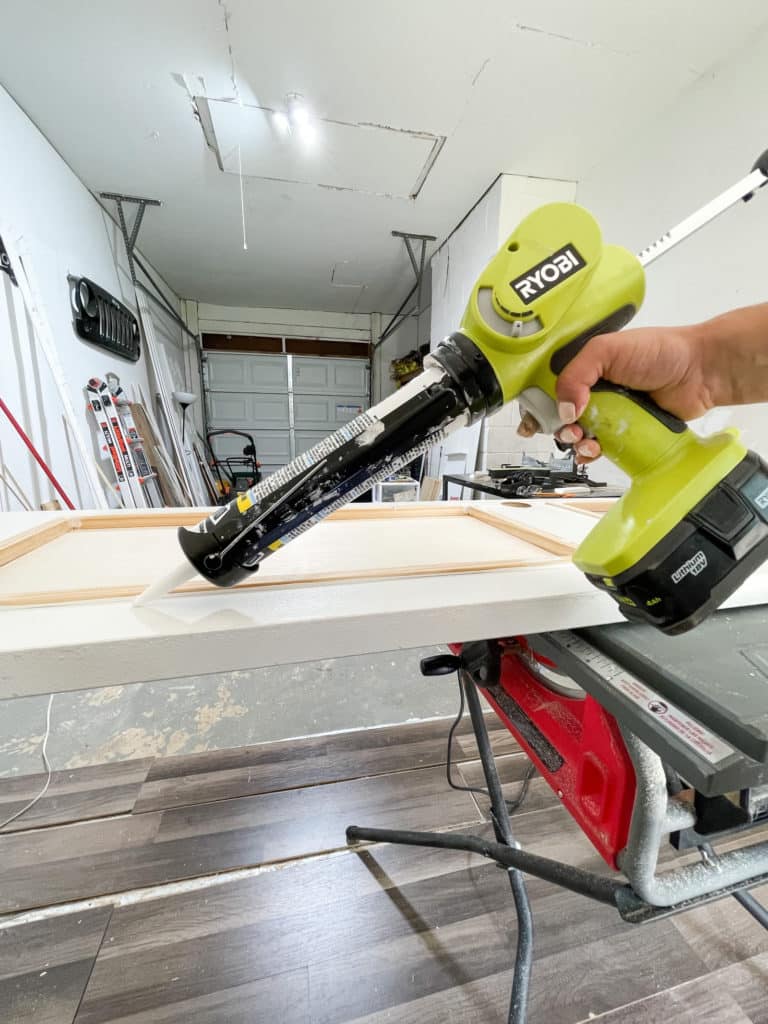
Step 8: Prime & paint
Prime and paint your door using your color of choice.
For reference I used “Agreeable Gray” by Sherwin Williams
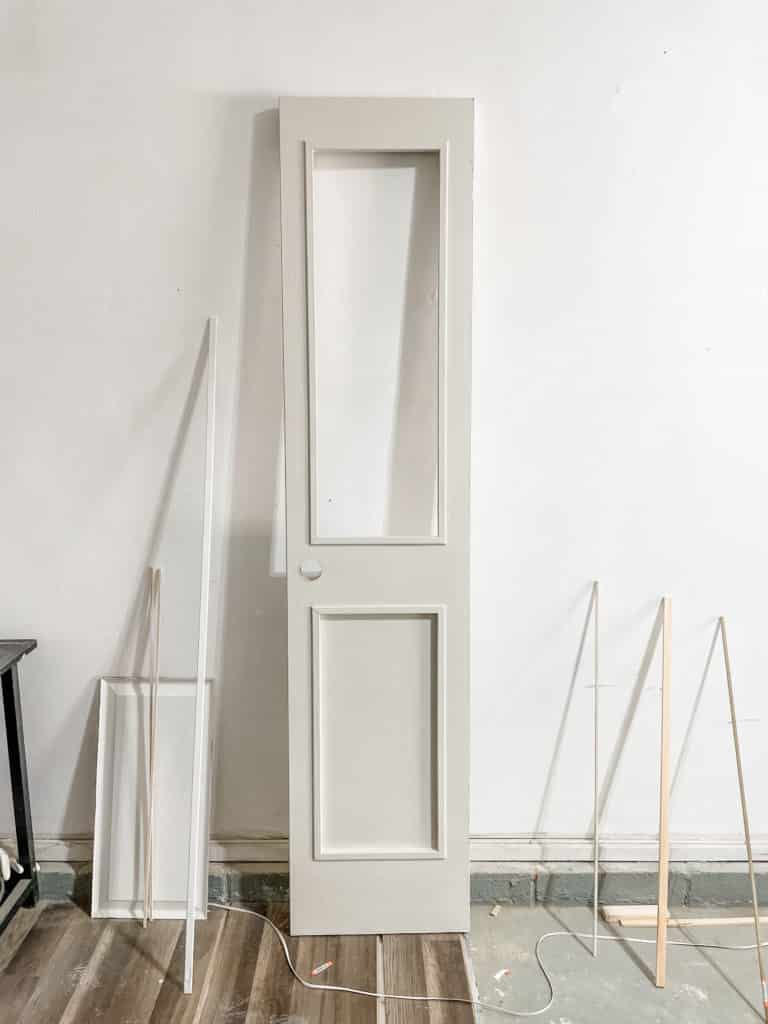
Glass
Let’s talk a little about the glass panel. If time is not an issue, I recommend going to a local glass store and placing a custom order for your glass sheet.
As far as what type of glass to go with ideally you want to use tempered glass. Tempered glass breaks into a million little pieces if it were to shatter unlike the sharp, jagged pieces that regular glass breaks into. Keep in mind that it is more expensive than regular glass and the price can quickly add up depending on the size you may need.
Disclaimer: I opted to use regular glass rather than tempered glass due to the pricing difference (we also don’t have kids yet, so I figured the chances of the glass breaking are pretty low for us)
Step 9: Privacy film (optional)
If you are not able to get frosted glass but want the same look, you can cover the glass with privacy film to get the same effect.
Cut the film to your desired size. I recommend cutting it a little bigger than what you actually need and trimming it down once it’s on the door.
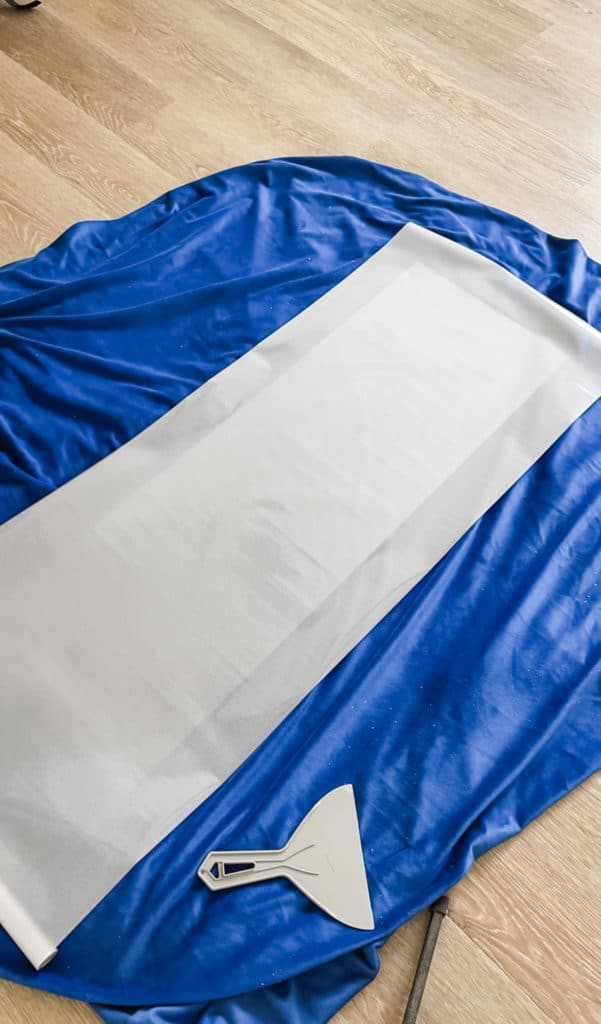
Spray your glass with water. Remove the backside of the film and place it onto the glass.
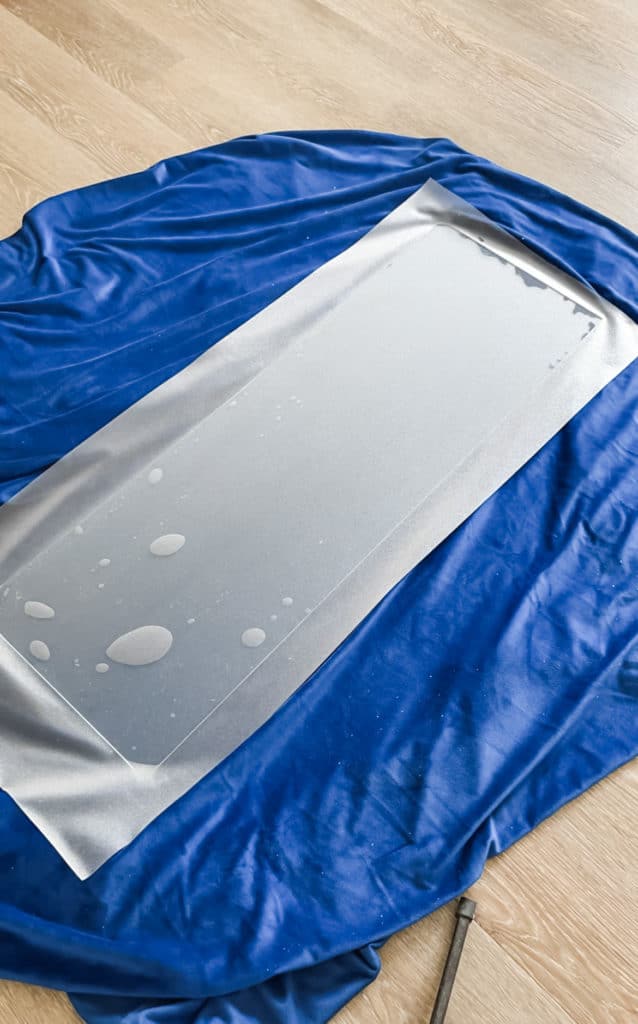
*IMPORTANT NOTE: Make sure that you are working on a clean surface when doing this step and inspect the glass immediately afterwards. I ended up with a few dog hairs in between the film and the glass and didn’t notice until it was too late.
Use a plastic putty knife to remove the bubbles.
Don’t worry if the edges aren’t perfect, you won’t be able to see them once the glass is on the door.
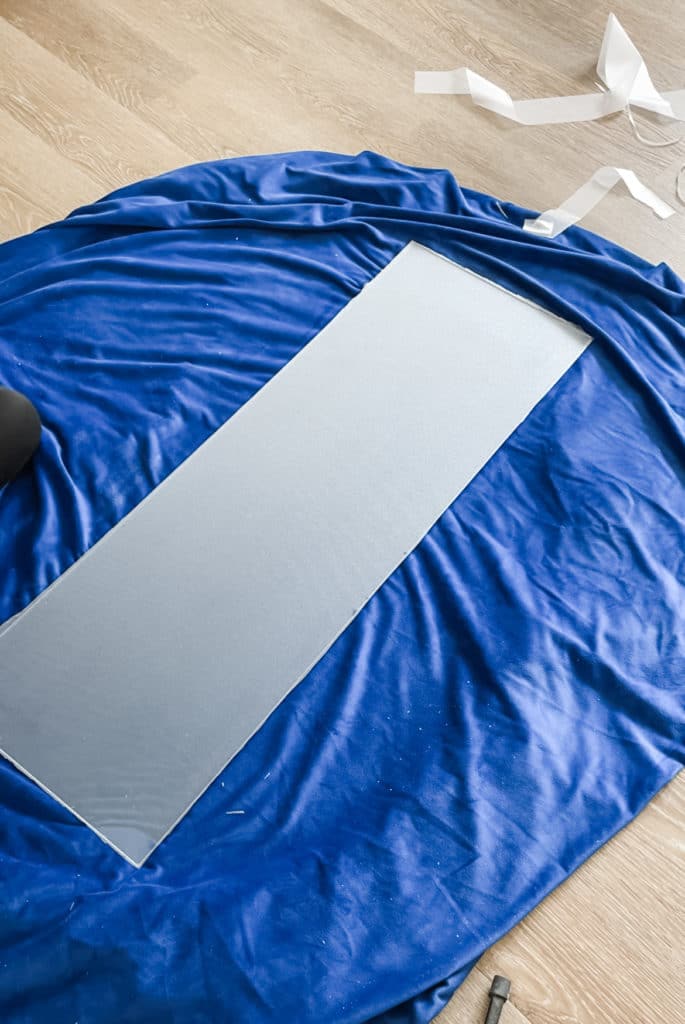
Step 10: Glass Panel
Lay your door on a flat surface with the front side of the door facing down. Insert your sheet of glass within the door opening. The glass of sheet should sit right up against the corner moulding from the front side of the door.
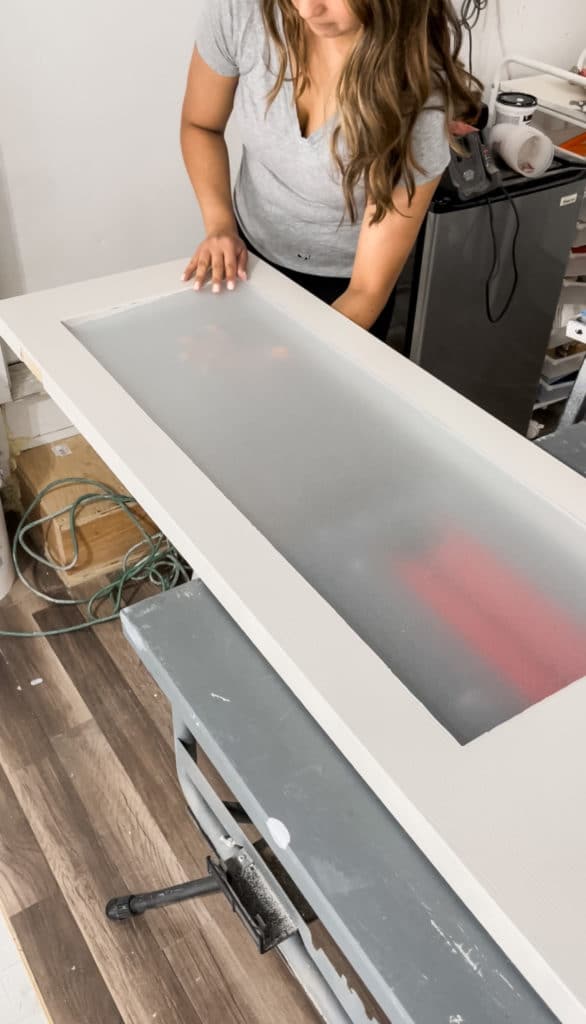
Here’s where I noticed a mistake. I realized that I had not taken glass thickness into consideration. My glass was too thin so it didn’t fit snuggly in between the two front and back corner moulding pieces.
In order to fix this I placed square dowels behind the glass. I used wood glue to attach them onto the inner sides of the door. I then placed the moulding pieces over the dowels and secured them with more wood glue. This ensured that my glass was snug.
*IMPORTANT NOTE: You can further secure the back corner moulding pieces by using a brad nailer. However, you risk shattering the glass if the nail accidentally hits it.
Step 11: Touch-up work
Now that the trim on the backside of the upper door panel is attached, you can go back to do touch-up work if needed. I caulked the edges of the trim and used a touch-up paint pen to finish painting the trim that I hadn’t gotten to yet.
Step 12: Add new hardware
New hardware such as door handles and hinges are always a great and inexpensive way to update the look of any door.
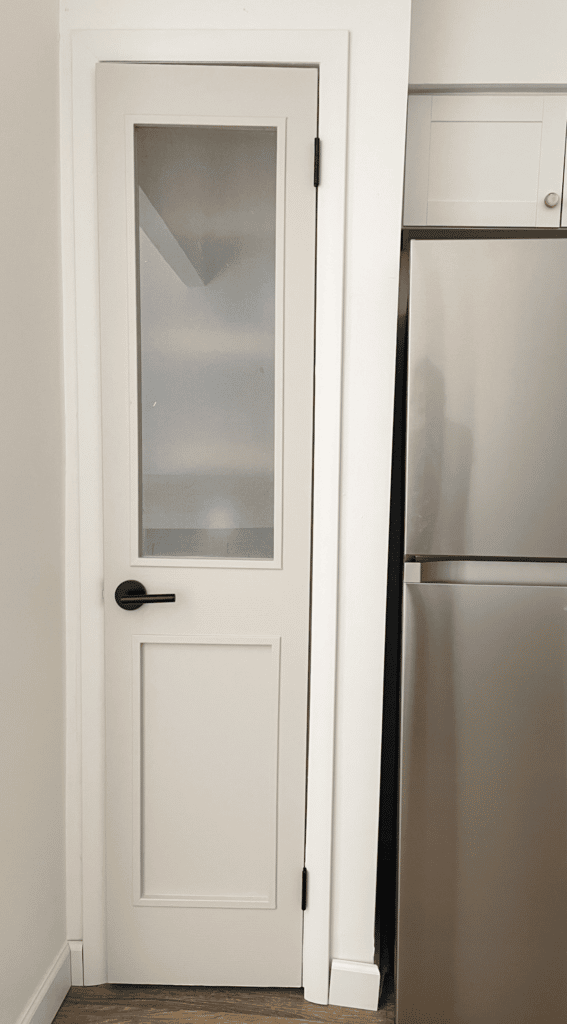
I was a bit skeptical during this project but I cannot believe we were able to pull off this pantry door makeover and give it a custom look! I am pleasantly surprised with the end result and am already planning to do this to our second pantry door as well.
If you would like to see more of this project you can find video clips saved under a highlight titled “Pantry Door” over on the @ourblissfulnest Instagram page. If you have any questions leave them down below. As always, if you decide to try out this DIY feel free to tag @ourblissfulnest on your Instagram posts or send a picture via DM or email. I would love to see how it turns out!
Disclaimer: This post contains links in which I do earn a small commission from if you decide to purchase through them. This comes at no additional cost to you and as always your support is greatly appreciated!





